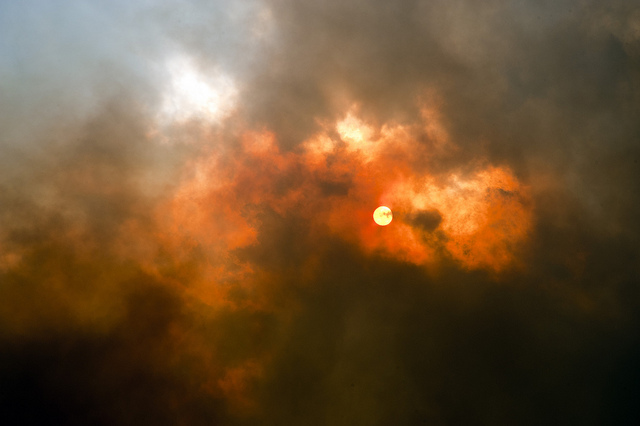
Originally published 26 October 2018.
The release earlier this month of a major UN-sponsored scientific report on the significant impacts expected from 1.5°C of global warming—the aspirational limit countries adopted in the Paris climate agreement—generated widespread media interest. Much of the commentary has rightly focused on the rapidly closing window of opportunity to achieve the aspiration and the huge scale of the societal changes required.
But the recent coverage has largely overlooked an equally important aspect of the study. Based on the most recent scientific evidence, researchers have now determined that extremely harmful climate impacts will strike at much lower temperature thresholds than previously projected.
The UN Intergovernmental Panel on Climate Change’s special report on the impacts of global warming of 1.5°C, which was produced at the request of countries adopting the Paris agreement, is an authoritative and cautious document. It’s the culmination of the efforts of 133 contributing authors who analysed more than 6,000 scientific studies and incorporated comments from over 40,000 expert and government reviews.
The report highlights the enormous challenge of limiting global warming to 1.5°. Annual emissions of CO2 will need to be halved by 2030 relative to 2016 levels and renewable energy will need to supply 70–85% of global electricity demand (with coal’s contribution essentially ceasing) by 2050. It notes that systemic changes on this scale would be historically unprecedented and require ‘deep emissions reductions in all sectors, a wide portfolio of mitigation options and a significant upscaling of investments in those options’.
A key objective of the report is to describe how the climate-related risks at 1.5° would differ from those at 2° of warming (the upper limit agreed in Paris). Not surprisingly, the report concludes that the risks for human and natural systems are higher at 2°, but it is the scale of the difference that is most worrying—particularly given that without further ambition to reduce greenhouse gases, we can expect between 3° and 4° of warming.
For example, that 0.5° difference would, according to the report, result in several hundred million additional people falling into poverty; a 50% increase in the proportion of the global population experiencing water stress; 420 million more people frequently exposed to extreme heatwaves; 184 to 270 million more people exposed to an increase in water scarcity; and a 10-fold increase (from 8 million to 81 million) in the number of vulnerable people affected by changes to crop yields (jumping to a 50-fold increase at 3° of warming).
As distressing as these projections may be, they probably underestimate the actual harm because they don’t generally take account of the cascading impacts of disasters, which can often be more severe than the proximate impacts. The report in effect acknowledges this, noting that ‘The literature on compound as well as interacting risk at warming of 1.5°C and 2.0°C is limited.’ It observes that ‘Multi-sector risks are projected to overlap spatially and temporally, creating new (and exacerbating current) hazards, exposures, and vulnerabilities that will affect increasing numbers of people and regions with additional warming.’
Media coverage of one of the report’s most important findings has been relatively low-key. Recent research has now determined that global warming will trigger highly harmful societal impacts at significantly lower temperatures than was previously assumed.
The IPCC’s 2014 Fifth Assessment Report identified five categories of impacts and determined for each the implications at various levels of warming for people, economies and ecosystems. The categories are: unique and threatened systems; extreme weather events; distribution of impacts; global aggregate impacts; and large-scale singular impacts (so-called climate tipping points). The current study, drawing on the most up-to-date scientific evidence, has determined that the 2014 assessment significantly underestimated the risks in four of the five categories.
For example, in the case of ‘unique and threatened systems’, the threshold for the transition from ‘high’ to ‘very high’ risk has been lowered from 2.6° to between 1.5° and 2° of warming. The change reflects recent research that, among other things, has now determined with ‘very high confidence’ that 2° of warming will result in the total loss of coral reefs from the world’s tropical and subtropical regions.
‘Extreme weather’ is the only category of impacts for which the report’s finding is relatively unchanged from 2014. However, that is largely because, as the authors point out, ‘The impact literature contains very limited information about the potential for human society to adapt to extreme weather events and hence it has not been possible to locate the transition from “high” … to “very high” risk within the context of assessing impacts at 1.5°C versus 2°C global warming.’
Given the hugely disproportionate effect climate change will have on less developed countries and the likelihood of cascading impacts, there is good reason to suspect that plugging this research gap will reveal a significantly lower threshold in this major category as well.
As the scientific uncertainty diminishes, it is becoming increasingly clear that we have greatly underestimated the impacts of climate change. The IPCC report’s findings make it urgent for nations, including Australia, to scale up rapidly their national commitments under the Paris agreement.

